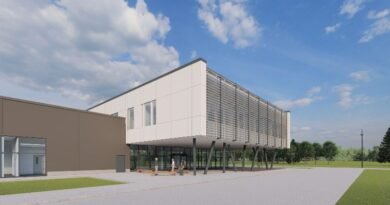Steelmaking Decarbonization: Transforming the Industry
Lina Svaldenienė
The steelmaking industry is a significant contributor to environmental problems, especially in terms of greenhouse gas emissions. To address this issue, the industry is exploring ways to reduce its carbon footprint and minimize its negative impact on natural resources and ecosystems.
Carbon intensity of the industry
As stated in the Emissions Gap Report 2022 by the UN Environment Programme, the industry sector is the largest contributor to global emissions when including direct and indirect emissions. So far, efforts to decrease emissions have mainly focused on improved energy efficiency and the application of best available technologies.
The key transformations needed to bring the industry sector to a 1.5°C-compatible pathway:
- electrifying industry,
- transforming production processes using new fuels and solutions for hard-to-abate sectors,
- accelerating material efficiency and scaling up energy efficiency everywhere,
- promoting circular material flow.
Technological transformations by ArcelorMittal
Steel is an essential material used in many industries, including automotive and machinery manufacturing and construction.
Traditionally, steelmaking involves the use of coal in the blast furnace process, resulting in significant CO2 emissions, with an estimated 2 tons of CO2 per tonne of steel produced. However, steelmaking companies, such as ArcelorMittal, are making efforts to reduce their carbon footprint.

Electrifying: electric arc furnaces instead of blast furnaces
ArcelorMittal, the world’s largest steel producer, has been using recycled scrap and green electricity to produce steel with fewer CO2 emissions.
Circular material flow: collecting carbon to produce ethanol
The company is introducing its Carbalyst decarbonization technology, where carbon-rich waste gases are captured and reused to produce valuable chemical products.
“Production with recycled CO2 has started just few months ago. Officially launched technology, called Carbalyst, is using the CO2 that we capture in the blast furnace. Then it is put into plants, where ethanol is produced. Because of this new unit, ethanol became our side product”, explained Pascal Lamiroy, Project lead at ArcelorMittal Europe.
The recycling of production waste to create something new and valuable is an excellent example of circular economy practices. By reusing carbon-rich waste gases, Carbalyst can contribute to reducing greenhouse gas emissions while simultaneously producing valuable products.
Using new fuels: biomass instead of coal
The other technology Lamiroy introduced to Baltic industry is Torero.
“We can also use wood waste to change the coal that we are using in the blast furnace”, said project lead.
To prove the viability of this approach, ArcelorMittal constructs an industrial-scale demonstration plant that converts waste wood into renewable energy through a process called torrefaction. The demonstration plant, based at steelworks in Gent, Belgium, involves the construction of two reactors, each of which will produce 40,000 tonnes of bio-coal annually.
Steelmakers at BAU 2023
The use of smart and green technologies in the steelmaking industry is becoming increasingly critical in achieving environmental sustainability in every sector where steel is an essential material. By attending industry events, professionals can learn more about these innovative technologies and how they can contribute to reducing the carbon footprint of their value chain. ArcelorMittal is goin to present their key transformations at the biggest construction fair BAU2023 on on April 17-22, in Munich.




